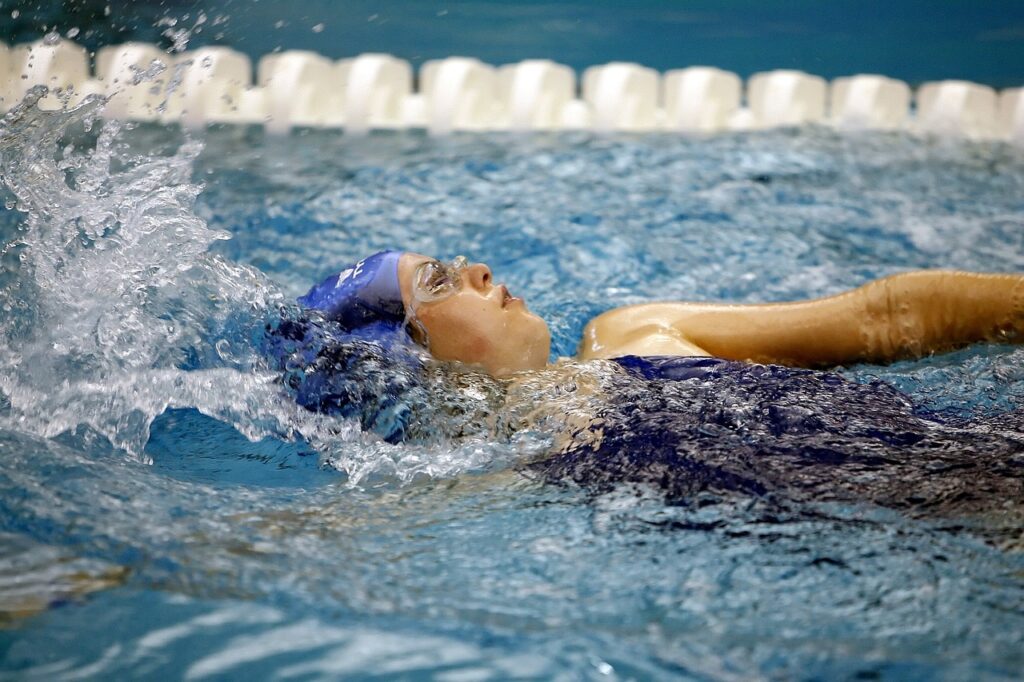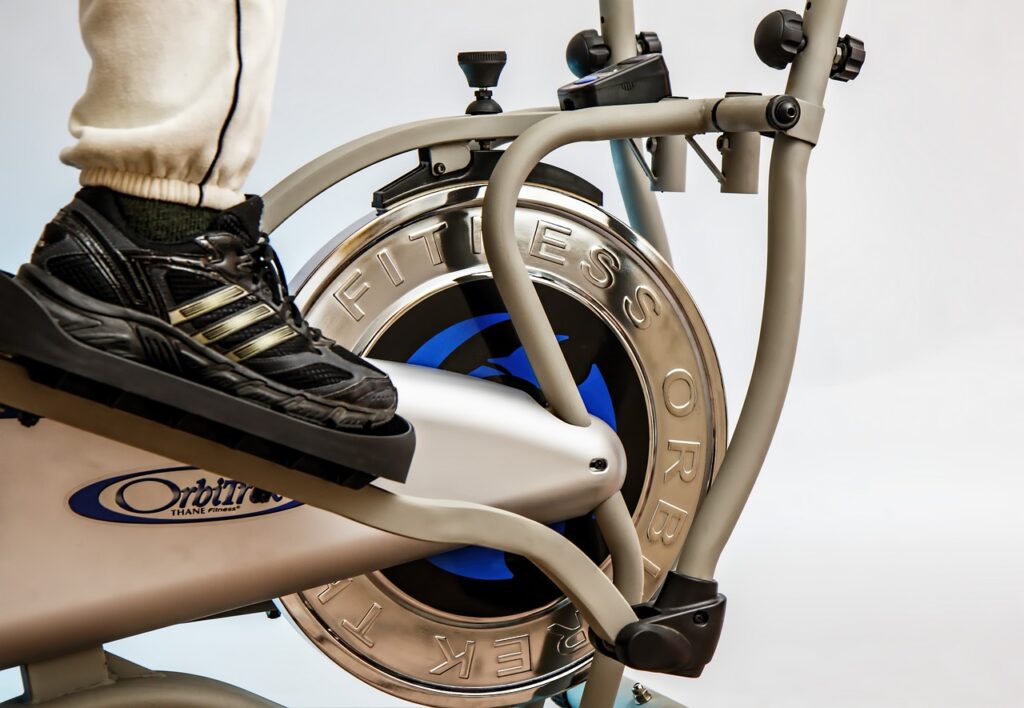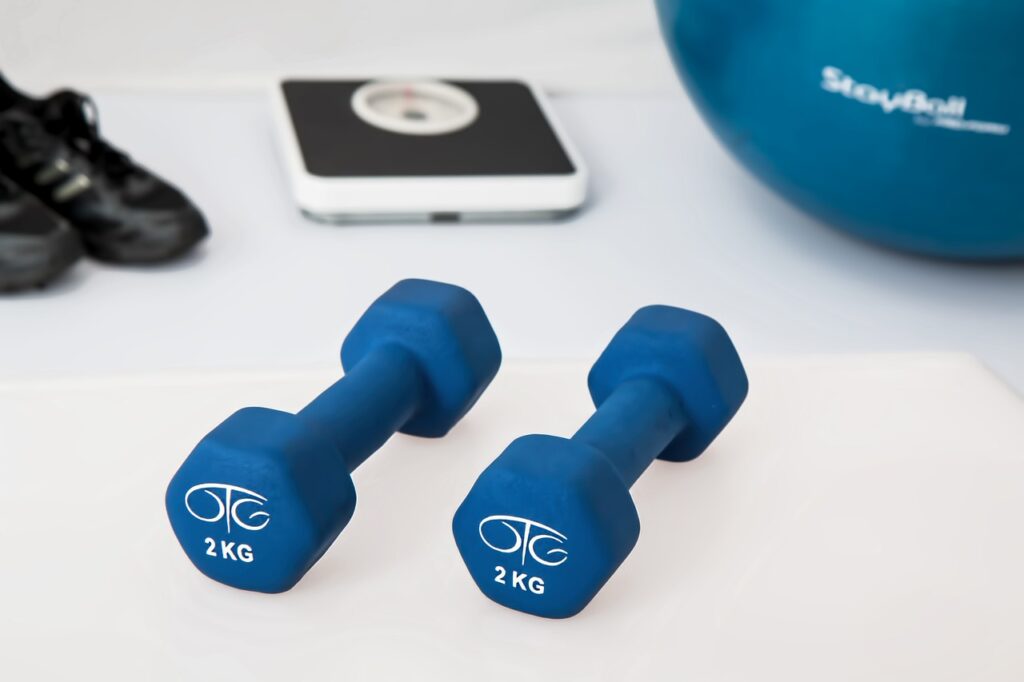
Swimming is a popular form of exercise that offers numerous benefits to the body. It is a low-impact activity that is gentle on the joints, making it an ideal workout for people of all ages and fitness levels. Swimming can help improve cardiovascular health, increase muscle strength, and reduce stress levels. In addition, swimming is an effective way to burn calories and lose weight.
Swimming is a full-body workout that engages all major muscle groups, including the arms, legs, back, and core. It can help build endurance and improve overall fitness levels. Swimming is also a great way to burn calories and lose weight. According to the American Council on Exercise, a 150-pound person can burn approximately 400-500 calories in an hour of moderate swimming.
Swimming can be a fun and enjoyable way to get in shape and improve overall health. Whether you are looking to lose weight, build muscle, or simply stay active, swimming offers a variety of benefits that can help you achieve your fitness goals. With proper technique and consistency, swimming can be an effective and rewarding form of exercise.
Table of Contents
Benefits of Swimming for Fitness and Weight Loss
Swimming is an excellent form of exercise that offers numerous benefits for both fitness and weight loss. Here are some of the key benefits of swimming:
1. Low-Impact Exercise
Swimming is a low-impact exercise that is easy on the joints and muscles. Unlike running or other high-impact exercises, swimming does not put stress on the body, making it ideal for people with joint pain or injuries.
2. Full-Body Workout
Swimming is a full-body workout that engages all of the major muscle groups in the body. It helps to build muscle, increase endurance, and improve overall fitness.
3. Burns Calories
Swimming is a great way to burn calories and lose weight. Depending on the intensity of the workout, swimming can burn anywhere from 400 to 700 calories per hour.
4. Improves Cardiovascular Health
Swimming is an excellent cardiovascular exercise that can help to improve heart health and reduce the risk of heart disease. It can also help to lower blood pressure and cholesterol levels.
5. Reduces Stress
Swimming is a great way to reduce stress and improve mental health. The rhythmic movements of swimming can help to relax the body and mind, reducing stress and anxiety.
Overall, swimming is a great form of exercise that offers numerous benefits for both fitness and weight loss. By incorporating swimming into your fitness routine, you can improve your overall health and wellbeing.
Swimming Techniques for Maximum Impact
Freestyle Stroke
The freestyle stroke, also known as front crawl, is the most popular swimming technique for fitness and weight loss. It is an excellent cardiovascular exercise that engages the entire body, especially the core, arms, and legs. To maximize the impact of the freestyle stroke, it is important to maintain proper form and technique. This includes keeping the head down, the body streamlined, and the arms and legs coordinated in a continuous motion.
Breaststroke
The breaststroke is another effective swimming technique for fitness and weight loss. It is a slower stroke than freestyle but still engages the major muscle groups, including the chest, back, arms, and legs. To perform the breaststroke correctly, it is important to keep the head and neck in line with the spine, the arms and legs synchronized, and the body in a streamlined position.
Butterfly Stroke
The butterfly stroke is a more advanced swimming technique that requires more strength and coordination than the freestyle and breaststroke. It is an excellent full-body workout that targets the chest, back, shoulders, arms, and legs. To maximize the impact of the butterfly stroke, it is important to maintain a strong and fluid motion, keeping the head down and the body streamlined.
Backstroke
The backstroke is a popular swimming technique that engages the back, shoulders, arms, and legs. It is a great way to improve posture and strengthen the upper body. To perform the backstroke correctly, it is important to keep the head back and the body in a streamlined position, while maintaining a steady and continuous motion with the arms and legs.
In summary, incorporating a variety of swimming techniques into your fitness routine can help you achieve maximum impact and reach your weight loss goals. By maintaining proper form and technique, you can engage all major muscle groups and improve your overall cardiovascular fitness.
Developing a Swimming Workout Plan
Setting Realistic Goals
Before starting a swimming workout plan, it’s important to set realistic goals. This means taking into account your current fitness level, how much time you have to dedicate to swimming, and what you hope to achieve. For example, if you’re new to swimming, it’s not realistic to expect to swim a mile on your first day. Instead, start with shorter distances and gradually build up your endurance.
Incorporating Interval Training
Interval training is an effective way to improve your swimming fitness and help with weight loss. This involves alternating periods of high-intensity swimming with periods of rest or low-intensity swimming. For example, you could swim fast for 50 meters, then swim slowly for 50 meters, and repeat this pattern for several laps. This type of training can help improve your cardiovascular fitness and burn more calories.
Long-Distance Swimming
Long-distance swimming is another effective way to improve your swimming fitness and burn calories. This involves swimming continuously for a longer period of time, such as 30 minutes or more. However, it’s important to gradually build up your endurance and not push yourself too hard too soon. Start with shorter distances and gradually increase the time you spend swimming.
Rest and Recovery
Rest and recovery are important parts of any workout plan, including swimming. It’s important to give your body time to recover between workouts to avoid injury and burnout. This means taking rest days and not overdoing it when you do swim. Additionally, incorporating stretching and other recovery techniques can help keep your body healthy and ready for your next swim session.
Nutrition and Hydration for Swimmers
Balanced Diet for Swimmers
Swimming is a physically demanding activity that requires a balanced diet to provide the necessary nutrients for energy, muscle repair, and recovery. Swimmers should aim for a diet that includes a variety of fruits, vegetables, lean proteins, and whole grains. Carbohydrates are especially important for providing energy during workouts, and protein is essential for repairing and building muscle.
Hydration Strategies
Staying hydrated is crucial for swimmers to maintain performance and prevent dehydration. Swimmers should aim to drink water before, during, and after swimming sessions. It is recommended to drink at least 16 ounces of water 2 hours before swimming, and then 8-10 ounces every 20-30 minutes during swimming. After swimming, it is important to replenish fluids by drinking 20-24 ounces of water for every pound lost during exercise.
Pre and Post Swim Nutrition
Swimmers should consume a small meal or snack 1-2 hours before swimming to provide energy for the workout. A good pre-swim snack could include a banana, yogurt, or a granola bar. After swimming, it is important to consume a meal or snack that includes carbohydrates and protein to aid in muscle recovery. Good post-swim options include a turkey sandwich, chocolate milk, or a protein shake.
Overall, swimmers should aim for a balanced diet and stay hydrated to maintain performance and aid in muscle repair and recovery. By following these simple nutrition and hydration strategies, swimmers can maximize their workouts and achieve their fitness and weight loss goals.
Tracking Progress and Adjusting Your Routine
Monitoring Weight Loss
Tracking weight loss progress is an important part of any fitness routine. It can help individuals stay motivated and make necessary adjustments to their workout and diet plans. One way to monitor weight loss is by regularly weighing oneself, preferably at the same time each day. It is important to keep in mind that weight loss may not always be consistent, and there may be fluctuations due to factors such as water retention. Therefore, it is recommended to track weight loss over a longer period of time, such as a month, to get a more accurate picture of progress.
Assessing Fitness Levels
In addition to monitoring weight loss, it is important to assess fitness levels to ensure that the workout routine is effective. One way to assess fitness levels is by measuring heart rate during exercise. A higher heart rate during exercise indicates that the body is working harder and burning more calories. Another way to assess fitness levels is by tracking the amount of time it takes to complete a certain workout or exercise. As fitness levels improve, individuals may find that they are able to complete the same workout in less time or with less effort.
When to Intensify Your Workout
As individuals become more fit, it may be necessary to intensify their workout to continue to see progress. This can be done by increasing the duration or intensity of the workout, or by incorporating new exercises into the routine. It is important to make changes gradually to avoid injury or burnout. It is also recommended to consult with a fitness professional to ensure that the new workout plan is safe and effective.
Overall, tracking progress and adjusting the workout routine are important aspects of a successful swimming for fitness and weight loss program. By monitoring weight loss and assessing fitness levels, individuals can make necessary adjustments to their routine and continue to see progress.
Overcoming Common Challenges
Dealing with Plateaus
It is common for swimmers to reach a plateau in their fitness and weight loss journey. This occurs when the body becomes accustomed to the exercise routine and stops responding to it. To overcome this, swimmers can try changing their routine by adding new strokes or increasing the intensity of their workout. It is also important to incorporate strength training and flexibility exercises to prevent muscle imbalances and reduce the risk of injury.
Swimming in Different Conditions
Swimming in different conditions can present challenges. For example, swimming in cold water can cause the body to lose heat quickly, leading to hypothermia. Swimmers should wear appropriate gear, such as wetsuits, to stay warm. Swimming in open water can also be dangerous due to currents and waves. It is important to swim in designated areas and to always swim with a partner.
Staying Motivated
Staying motivated can be a challenge, especially when progress seems slow. To stay motivated, swimmers can set realistic goals and track their progress. They can also try swimming with a group or finding a workout buddy for accountability. It is important to remember that progress takes time and to celebrate small successes along the way.
By overcoming common challenges, swimmers can continue to make progress in their fitness and weight loss journey.
Safety and Injury Prevention
Proper Warm-Up and Cool-Down
Before starting any swimming workout, it is important to properly warm up and cool down. This helps to prevent injuries and prepares the body for exercise. A good warm-up should include light swimming, stretching, and some easy drills. A cool-down should include some easy swimming and stretching to help the body recover.
Technique and Posture
Proper technique and posture are important to prevent injuries and to get the most out of your swimming workout. Maintaining good posture while swimming helps to avoid strain on the neck and shoulders. Focusing on proper technique helps to prevent injuries to the shoulders, back, and knees. It is important to work with a coach or trainer to learn proper technique and posture.
Recognizing Overtraining
Swimming is a great way to get in shape, but it is important to avoid overtraining. Overtraining can lead to injuries and can actually impede progress. Signs of overtraining include fatigue, decreased performance, and increased susceptibility to illness. It is important to take rest days and to listen to your body to avoid overtraining.
Remember to always put safety first when swimming for fitness and weight loss. By following proper warm-up and cool-down techniques, focusing on proper technique and posture, and recognizing signs of overtraining, you can prevent injuries and get the most out of your swimming workout.
Equipment and Gear for Swimming
Choosing the Right Swimwear
When it comes to swimming, choosing the right swimwear is important for both comfort and performance. Swimmers should look for suits that fit snugly without being too tight or restrictive. One-piece suits are often preferred for women, while men can choose between briefs or trunks. It is also important to choose a suit made from a durable material that can withstand the harsh chemicals found in pools.
Goggles and Caps
Goggles and swim caps are essential pieces of equipment for swimmers. Goggles protect the eyes from chlorine and other chemicals found in pools, as well as provide clear vision underwater. Swimmers can choose from a variety of styles and sizes to find the perfect fit. Swim caps help keep hair out of the face and protect it from chlorine damage. They also help reduce drag in the water, which can improve performance.
Training Aids
Training aids can be helpful for swimmers looking to improve their technique and build strength. Kickboards are great for isolating leg muscles and improving kicking technique. Pull buoys can be used to focus on arm strength and technique. Hand paddles can help build upper body strength and improve stroke technique. Snorkels can be used to focus on breathing technique and improve overall endurance. Swimmers should consult with a coach or trainer to determine which training aids are best for their individual needs.
By choosing the right equipment and gear, swimmers can improve their performance and get the most out of their workouts.
Swimming Etiquette and Best Practices
Swimming is a great way to stay fit and healthy, but it’s important to follow proper etiquette and best practices to ensure a safe and enjoyable experience for everyone. Here are some tips to keep in mind:
Before You Swim
- Always shower before entering the pool to remove any dirt, sweat, or oils from your skin.
- Check the pool rules and regulations before entering to make sure you’re aware of any specific guidelines or restrictions.
- If you’re feeling unwell or have any open wounds, it’s best to avoid swimming until you’re feeling better.
While You Swim
- Respect other swimmers’ personal space and avoid crowding or bumping into others.
- Follow the designated swimming lanes and swim in a straight line, avoiding weaving or zigzagging across the pool.
- If you need to take a break or adjust your goggles, move to the side of the pool to avoid blocking others.
- Avoid diving in shallow areas or near other swimmers, and always look before you leap.
After You Swim
- Rinse off in the shower to remove any chlorine from your skin and hair.
- If you’ve used any equipment, such as kickboards or pull buoys, rinse them off and put them away properly.
- Avoid lingering in the pool area, especially if it’s crowded, to allow others to enjoy their swim.
By following these simple etiquette and best practices, you can help ensure a safe and enjoyable swimming experience for everyone.
Frequently Asked Questions
How often should I swim to see weight loss results?
Swimming is a great form of exercise for weight loss, but the frequency of your workouts will depend on your personal fitness goals and schedule. Generally, swimming 2-3 times per week for 30-60 minutes per session can lead to noticeable weight loss results over time.
What are the expected results of swimming for fitness and weight loss over time?
Swimming can help you burn calories, build muscle, and improve your overall fitness level. Over time, consistent swimming workouts can lead to weight loss and improved body composition.
Can swimming help reduce belly fat effectively?
Swimming can be an effective way to reduce belly fat, as it engages multiple muscle groups and can help you burn calories. However, it’s important to combine swimming with a healthy diet and other forms of exercise for best results.
What swimming techniques are most effective for weight loss?
Swimming techniques that involve continuous movement, such as freestyle or butterfly stroke, can be effective for weight loss. However, it’s important to vary your workouts and incorporate different strokes and intensities to prevent boredom and maximize results.
What is the ideal duration of a swimming workout for fat loss?
The ideal duration of a swimming workout for fat loss will depend on your fitness level and goals. Generally, aim for at least 30 minutes of continuous swimming per session, and gradually increase the duration and intensity over time.
How does swimming compare to other forms of exercise for weight loss?
Swimming can be an effective form of exercise for weight loss, but it’s important to find a form of exercise that you enjoy and can stick with long-term. Other forms of exercise, such as running or cycling, can also be effective for weight loss and overall fitness.

